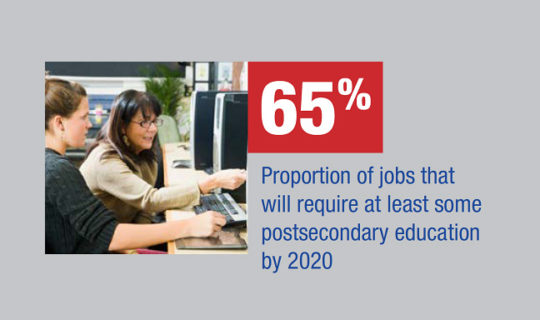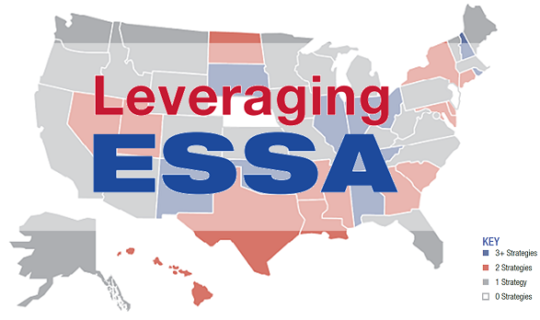Resource: Leveraging ESSA: Aligning K–12 and Postsecondary Credential Goals To Support Success for All Students
The Every Student Succeeds Act (ESSA) presents a critical opportunity for state leaders to establish aligned K–12 and higher education goals to increase the number of youth who successfully attain a postsecondary credential of value. Getting more students prepared for higher education is a critical step toward meeting postsecondary completion goals and, ultimately, a state’s long-term economic needs.
Youth leaving high school unprepared for the rigors of college and the new economy are at a significant disadvantage — they will struggle to earn credentials with labor market value, will have a harder time finding and keeping jobs, and will likely earn less over their lifetime than their more educated peers. K–12 and higher education leaders recognize this challenge, and the systems have individually taken steps to address it. However, if the systems’ goals are not aligned, the work will not be mutually reinforcing, and impact will be diminished. Delivering on the promise of meeting future workforce projections will require a collaborative, aligned approach to student preparation, access, and success.
Dramatically increasing postsecondary attainment is necessary to meet the economic needs of states and level the playing field for traditionally underrepresented student populations. But increasing attainment requires K–12 and higher education goals to be vertically aligned — so that the systems are rowing in the same direction. ESSA provides state higher education leaders a critical opportunity to partner with their K–12 colleagues to align efforts and create mutually reinforcing goals.
The strategy is clear: All states can and should align K–12 ESSA goals with their postsecondary attainment goals. Executing that strategy is the challenge. States that do not have a postsecondary attainment goal should bring the K–12, higher education, and workforce sectors together to establish one. For the majority of states that do have postsecondary attainment goals in place, K–12 and postsecondary leaders can work together using specific action steps outlined in the brief.
This brief is part of a series that Higher Ed for Higher Standards, in partnership with the Council of Chief State School Officers, the National Association of System Heads, and the State Higher Education Executive Officers Association, is releasing to support K–12 and higher education partnerships on state strategies for increasing college readiness and success through ESSA. This resource provides a strategy for aligning K–12 and higher education goals in state ESSA plans to help students transition successfully from high school to postsecondary education.







